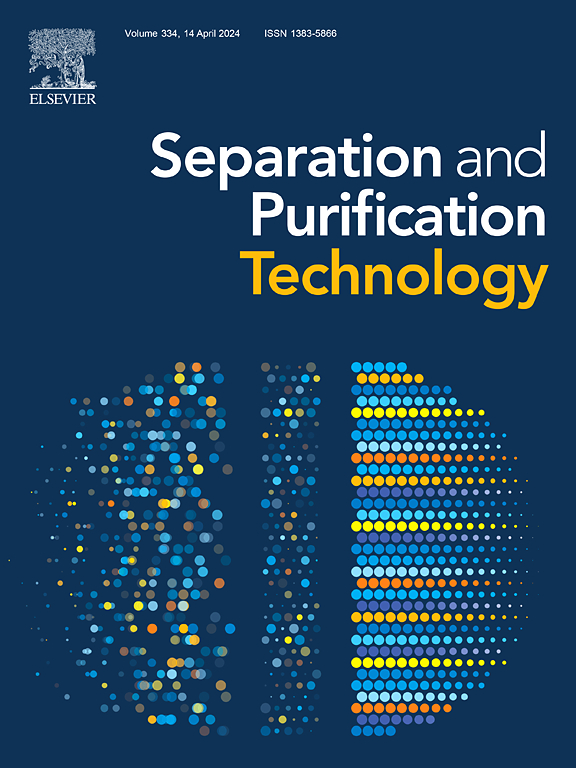Synchronous promotion of ZnIn2S4 sacrificial agent-free photocatalytic hydrogen production by non-metallic doping and construction of heterojunction
IF 9
1区 工程技术
Q1 ENGINEERING, CHEMICAL
引用次数: 0
Abstract
A review of previously reported materials for photocatalytic hydrogen production reveals that most of these still require the involvement of hole scavengers. To avoid the consumption of non-essential resources, the development of non-precious metal catalyst materials capable of achieving photocatalytic hydrogen production in a sacrificial agent-free environment is of greater value for practical applications. This study successfully prepared x-CdS/NZIS composites. The hydrogen precipitation rate of the 30-CdS/NZIS samples reached 212.81 μmol/g/h, which is 2.8, 20, and 82.8 times higher than that of NZIS, pristine ZIS, and CdS nanorods, respectively. Notably, this result was achieved without the addition of sacrificial agents. The strategy of replacing part of the sulfur with nitrogen doping increases the concentration of photogenerated carriers, improves the charge transfer rate, and suppresses the formation of electron-hole pairs. Furthermore, incorporating CdS nanorods into the composite structure facilitates the formation of type II heterojunctions, effectively suppressing interband electron-hole recombination. The combined implementation of these modification strategies results in the formation of an electron-rich region at the NZIS conduction band, which is conducive to H2 generation, even in the absence of sacrificial agents. This study offers a potential avenue for developing cost-effective solar hydrogen production systems that do not require the use of sacrificial agents.
通过非金属掺杂和构建异质结同步促进无牺牲剂 ZnIn2S4 光催化制氢
对先前报道的光催化制氢材料的回顾表明,这些材料中的大多数仍然需要空穴清除剂的参与。为了避免不必要资源的消耗,开发能够在无牺牲剂环境下实现光催化制氢的非贵金属催化剂材料具有更大的实际应用价值。本研究成功制备了x-CdS/NZIS复合材料。30-CdS/NZIS样品的氢析出率达到212.81 μmol/g/h,分别是NZIS、原始ZIS和CdS纳米棒的2.8倍、20倍和82.8倍。值得注意的是,这一结果是在没有添加牺牲剂的情况下获得的。用氮掺杂取代部分硫的策略增加了光生载流子的浓度,提高了电荷转移速率,抑制了电子-空穴对的形成。此外,在复合结构中加入CdS纳米棒有助于II型异质结的形成,有效抑制带间电子-空穴复合。这些修饰策略的联合实施导致在NZIS导带形成富电子区,即使在没有牺牲剂的情况下也有利于H2的生成。这项研究为开发不需要使用牺牲剂的具有成本效益的太阳能制氢系统提供了一条潜在的途径。
本文章由计算机程序翻译,如有差异,请以英文原文为准。
求助全文
约1分钟内获得全文
求助全文
来源期刊

Separation and Purification Technology
工程技术-工程:化工
CiteScore
14.00
自引率
12.80%
发文量
2347
审稿时长
43 days
期刊介绍:
Separation and Purification Technology is a premier journal committed to sharing innovative methods for separation and purification in chemical and environmental engineering, encompassing both homogeneous solutions and heterogeneous mixtures. Our scope includes the separation and/or purification of liquids, vapors, and gases, as well as carbon capture and separation techniques. However, it's important to note that methods solely intended for analytical purposes are not within the scope of the journal. Additionally, disciplines such as soil science, polymer science, and metallurgy fall outside the purview of Separation and Purification Technology. Join us in advancing the field of separation and purification methods for sustainable solutions in chemical and environmental engineering.
 求助内容:
求助内容: 应助结果提醒方式:
应助结果提醒方式:


